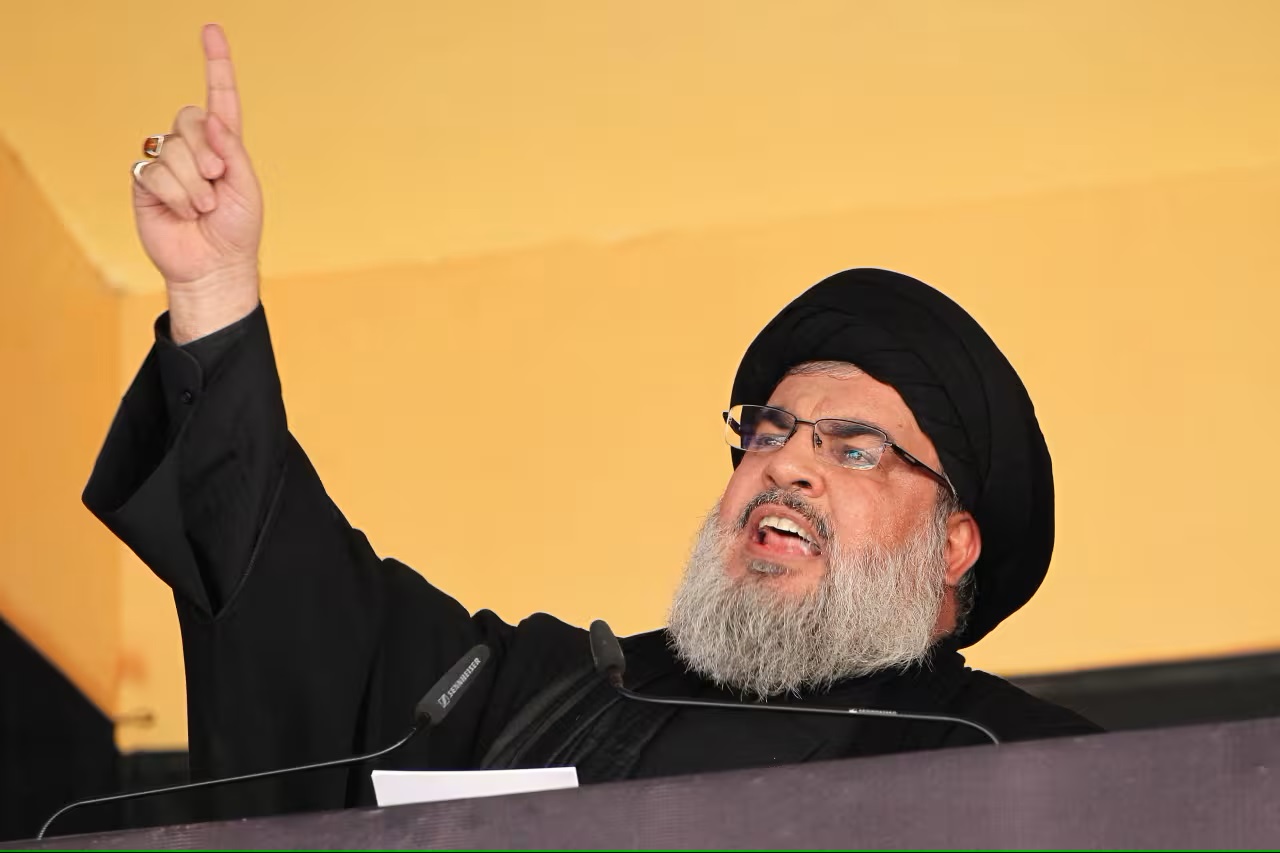Three senior Israeli defense officials disclosed to The New York Times on Saturday that Israel had been aware of the location of Hezbollah leader Hassan Nasrallah for months prior to initiating the strike that resulted in his death.
An Israeli strike on Hezbollah’s underground headquarters in Beirut resulted in the death of the terror chief on Friday.
Unnamed officials informed the outlet that the decision to strike Nasrallah was made in recent days without informing the US, as per an Israeli report. Jerusalem was concerned that the window of opportunity to remove him would close.
Three senior Israeli defense officials disclosed to The New York Times on Saturday that Israel had been aware of the location of Hezbollah leader Hassan Nasrallah for months prior to initiating the strike that resulted in his death.
An Israeli strike on Hezbollah’s underground headquarters in Beirut resulted in the death of the terror chief on Friday.
Unnamed officials informed the outlet that the decision to strike Nasrallah was made in recent days without informing the US, as per an Israeli report. Jerusalem was concerned that the window of opportunity to remove him would close.
Nasrallah and Ali Karaki, the southern front commander of Hezbollah, were killed on Saturday morning. Karaki had survived an Israeli assassination attempt days prior.
The report stated that the operation was planned during the time that Israeli officials were in discussions with the US regarding a potential pause in hostilities and prior to Prime Minister Benjamin Netanyahu’s departure to New York early Thursday morning to address the United Nations General Assembly.
Six buildings in southern Beirut were destroyed in the strike, according to two of the officials, who reported that more than 80 bombs were dropped.
The strike was conducted without any errors or enemy fire on the Israeli Air Force’s warplanes, according to senior officials on Saturday.
“The intelligence, planning, planes, and operation were all executed with precision and without any errors.” The commander of the 69th Squadron of the IAF informed reporters that the operation was flawless. The lieutenant colonel is only permitted to be identified by his first initial in Hebrew, as stipulated by military regulations.
Hatzerim Airbase in southern Israel is the location of the 69th Squadron, which operates a fleet of F-15I fighter jets. Reservists comprised fifty percent of the pilots who participated in the operation.
“We proceeded to the Dahiyeh, the heart of Beirut, to execute our attack.” The commander further stated, “We were aware of the individuals we intended to target.”
The “very complex” mission was meticulously planned, according to Brig. Gen. Amichai Levin, the commander of the Hatzerim Airbase.
He stated that the crews were not at risk during the strike, and no missiles were fired at the planes.
Levin continued, “This is a necessary component of the process of striking underground sites at this depth, as dozens of munitions are delivered with exceptional precision within seconds.”
He foresaw that the assassination of Nasrallah would “have a profound effect that will change the face of the Middle East.”
Channel 12 news in Israel reports that Netanyahu authorized the strike just hours prior to his address to the United Nations General Assembly in New York, which occurred mere hours prior to the attack. Defense Minister Yoav Gallant supported the decision, which had been approved in principle by the cabinet on Thursday evening.
According to a US official who spoke with The Times of Israel on Friday, Washington was only informed of the strike after its aircraft had already launched and the operation was underway.
While Netanyahu was engaged in discussions regarding the strike, the United States was under the impression that it was in good faith negotiations with the premier and Strategic Affairs Minister Ron Dermer regarding a potential ceasefire in Lebanon, which had been the subject of intense airstrikes for several days.
According to Channel 12, the United States was left with a sense of being misled after the attack on Nasrallah.
The channel provided a summary of the days of consultations between Netanyahu, ministers, and defense brass regarding the plan. The information was not substantiated by a source, despite the prevalence of anonymous leaks of internal cabinet discussions in Hebrew language media.
The plan was formulated on Monday, according to Channel 12, but it was only discussed on Wednesday. The plan was unanimously supported by IDF chief of staff Herzi Halevi, Mossad chief David Barnea, Shin Bet chief Ronen Bar, and Gallant during an initial meeting.
Subsequently, Finance Minister Bezalel Smotrich and other cabinet ministers expressed their opposition to the initiative. Smotrich, an outspoken hawk, and Regional Cooperation Minister David Amsalem were reportedly concerned that it would impede the IDF’s ongoing operations in Gaza.
Nevertheless, the cabinet granted its conditional approval, and on Friday, Halevi reportedly informed Gallant, “We have everything we need.” We are able to proceed with the operation. We are aware that Nasrallah is located within the bunker.
Gallant and Halevi contacted Netanyahu, who was scheduled to deliver a speech at the General Assembly shortly, and informed him that they favored the operation’s continuation.
The prime minister responded affirmatively and subsequently proceeded to the United Nations, where he delivered a speech on Friday morning. The speech contained passages that denounced and threatened Hezbollah, as well as a warning to Iran.
The IAF began dropping bombs over Beirut less than an hour later, as the sun began to set in the Middle East.
Subsequently, it announced that the operation had been entirely successful.
